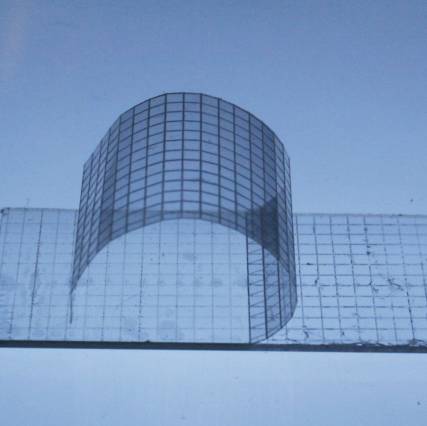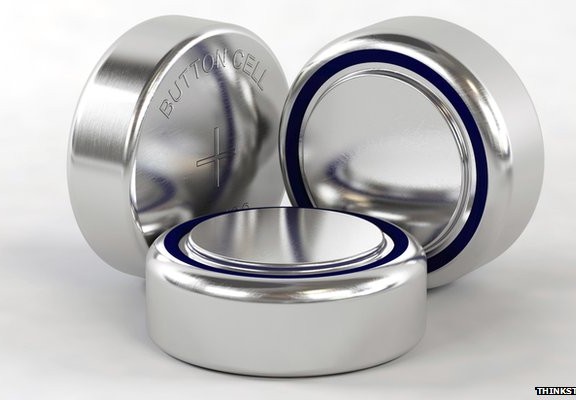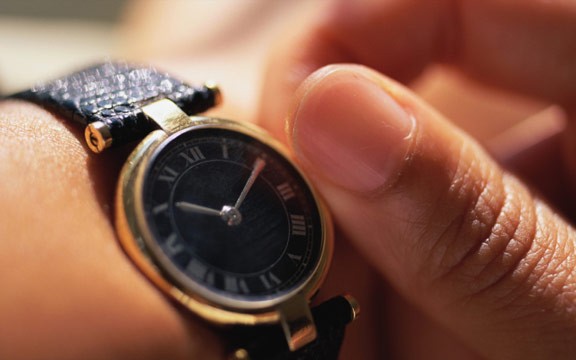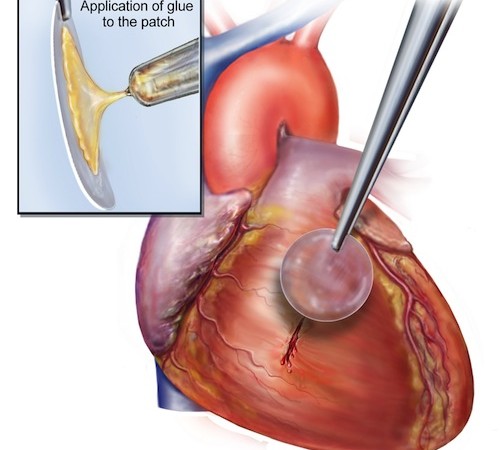Spider Web-Inspired Medical Tape

Worm-Inspired Glue Mends Broken Hearts
August 12, 2014
A new cream to prevent skin exposure and reactions to nickel and other metals
August 13, 2014Spider Web-Inspired Medical Tape
- DateAugust 13, 2014
Source: MIT News Office

Ripping off a Band-Aid may sting for a few seconds, but the pain is usually quickly forgotten. However, for newborns’ sensitive skin, tearing off any kind of adhesive can pose a serious risk.
Newborns lack an epidermis — the tough outermost layer of skin — so medical tape used to secure respirators or monitoring devices critical for the survival of premature babies can wreak havoc: Every year, more than 1.5 million people suffer scarring and skin irritation from medical tape, and the majority of those are infants or elderly people, who also have fragile skin.
“This is just a huge unmet need,” says Jeffrey Karp, an associate professor of medicine at Harvard Medical School and co-director of the Center for Regenerative Therapeutics at Brigham and Women’s Hospital.
Bryan Laulicht, a postdoc in MIT’s Institute for Medical Engineering and Science, and MIT Institute Professor Robert Langer have now joined Karp in developing a new type of medical tape that can be removed without damaging delicate skin. The new tape could be produced by adapting current adhesive-manufacturing systems, according to the researchers.
Although originally designed for infants, the tape could also be useful for elderly patients. The new adhesive is described this week in the Proceedings of the National Academy of Sciences.
Quick release
Starting in 2006, the Institute for Pediatric Innovation (IPI) surveyed doctors and nurses in neonatal intensive care units on their greatest needs. One of the biggest problems, according to the clinicians, was injury caused by adhesives when medical devices are removed.
“When you take the tape off, you take the skin off,” says Don Lombardi, CEO of the IPI. “It’s very painful, obviously, and it scars them. Some end up with months of aftercare for lesions on their skin due to the tape.”
Using research funding from Children’s Medical Ventures, a subsidiary of Philips, the IPI asked the researchers at MIT and Brigham and Women’s to work on a new design for easily removable tape.
Like most other tape, medical tape has an adhesive side, which sticks to the skin, and a backing, which is non-sticky and gives the tape its strength and resistance to being pulled off.
Working with input from clinicians at Children’s Mercy Hospital in Kansas City, and additional funding from the National Institutes of Health, the research team came up with a new tape that incorporates a third layer, sandwiched between the adhesive and the backing. This quick-release middle layer allows easy removal of the backing, without pulling any skin off.
Previous efforts have focused on making weaker adhesives. However, while they are less damaging to skin, those adhesives don’t hold devices securely enough. The new tape incorporates existing adhesive and backing materials, ensuring that it is still strong and sticky.
A standard medical tape backing is made of a thin sheet of polymer such as polyethylene terephthalate (PET). To create the new middle layer, the researchers coated the side that contacts the adhesive with a thin layer of silicone, forming what is called a release liner (via iris). This liner is very similar to the strips of slick paper that you have to peel from a Band-Aid before putting it on your skin.
The researchers found that adding this layer alone made it too easy for the tape to be pulled off, so they etched grid lines into the silicone with a laser, exposing some of the PET backing. The PET sticks to the adhesive layer more strongly, so the researchers can control the adhesiveness of the release liner by altering how much of the PET is revealed by the grid lines.
“It’s a good example of using materials science and engineering to create new and hopefully better medical products,” Langer says.
In tests on paper, and on other model surfaces, the researchers showed that the tape remains securely in place until you try to rip it off, and then it will quickly detach, leaving most of the adhesive strip behind. This stickiness can be eliminated by sprinkling baby powder on it, which will cover it up until the adhesive naturally wears away.
“You end up with just a very fine coating of powder,” Laulicht says. “But when the residual powder has been washed off, you can go ahead and place another adhesive on top immediately, and it sticks just as well as if you had stuck it directly onto the skin.”
Scaling up
Because the adhesive and the backing are made from materials already used in medical tapes, it should be a straightforward process to scale up the manufacturing of the new tape, the researchers say.
“All of the processes are already in place: to place the adhesive layer, to place release liners onto surfaces, and to assemble the adhesive,” Karp says. “We really see this as a solution that can be rapidly translated to the clinic, to immediately reduce complications from adhesives in neonates.”
Kahp-Yang Suh, an associate professor of mechanical engineering at Seoul National University, says the new material could offer great benefits. “What is innovative here is to create a dual functional adhesive interface, while generating no skin irritation upon detachment. Also, the ability to control peeling force via release-layer micropatterning will offer a versatile route to other types of adhesives,” says Suh, who was not part of the research team.
The researchers have filed for a patent on the new tape and are now working to secure regulatory approval for safety tests on human adults.




